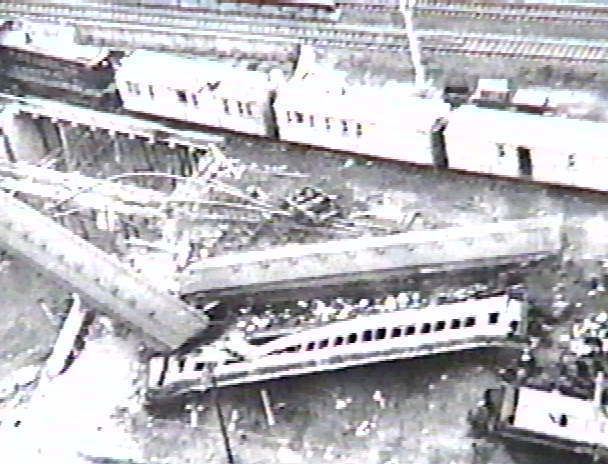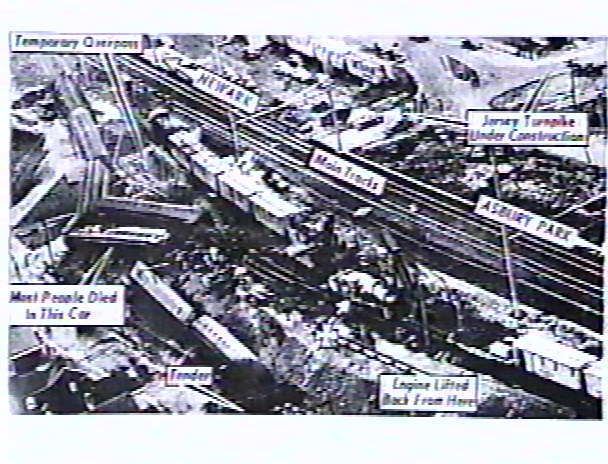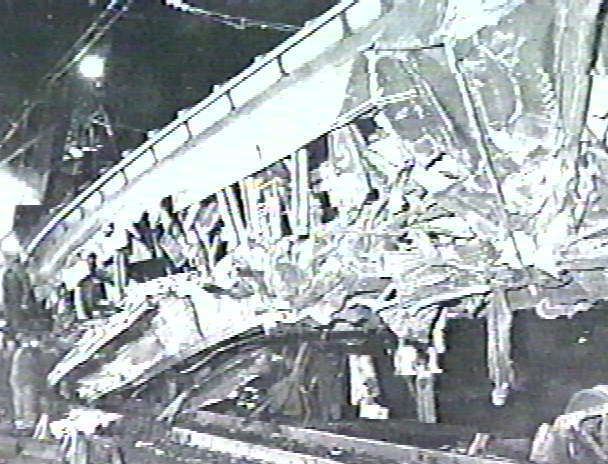Time 5.43 pm Cause Excessive speed Total number of deaths 85 Injuries 500 Location Woodbridge | Country United States Date 6 February 1951 Operator Pennsylvania Railroad Trains 1 | |
 | ||
Rail line North Jersey Coast Line Type of incident Derailment at diversion | ||
The Woodbridge train wreck occurred on February 6, 1951 in Woodbridge, New Jersey when a train derailed crossing a temporary wooden trestle, killing 85 people. It is the deadliest train wreck in New Jersey, and the third worst train disaster in American history, and the deadliest since 1918.
Contents

Train 733 Info

At 5.10 pm on a cold drizzly evening, Pennsylvania Railroad train number 733 (called 'The Broker' as many of its passengers were stockbrokers on Wall Street) began its journey from Exchange Place in Jersey City. It provided an express service to Bay Head via the North Jersey Coast Line and was especially crowded that day due to a strike on the nearby Jersey Central Railroad and carried 1,100 passengers in eleven cars hauled by PRR K4s 4-6-2 steam locomotive 2445.
Speed restriction

A temporary wooden trestle and a shoofly adjacent to Fulton Street in Woodbridge had come into use that very afternoon so that laborers building the New Jersey Turnpike could work on the main line. Eight days previously train engineers had been told to slow to 25 mph (40 km/h) through Woodbridge rather than the normal 60 mph (97 km/h) from 1:01 pm on Feb 6. However it appears that despite being reminded of the restriction by his conductor prior to leaving Jersey City the engineer Joseph Fitzsimmons failed to slow the train and the subsequent enquiry found that it had been travelling at over 50 mph (80 km/h) when it hit the curve approaching the trestle. About a mile before Woodbridge the conductor, alarmed at the train's speed, had tried to pull the emergency cord but the crush of passengers made it impossible.
Derailment

The weight of the locomotive shifted the tracks, causing the derailment; and eight of the eleven cars derailed; the first two cars just fell on their side but the third and fourth cars jack-knifed into each other as they hurtled down a 26-foot-high (7.9 m) embankment. It was in these two cars that most of the 85 fatalities occurred. The fifth and sixth cars were left hanging in mid-air over a street which was shiny from rain, and some say that many who survived the crash jumped to their deaths believing they would land in water, although the street was less than 15 feet below them. The accident happened at 5:43 pm in a densely populated area and help soon arrived in response to the town's emergency whistle; neighbors opening their houses to those in need. The seriously injured were taken to hospital in nearby Perth Amboy and a makeshift morgue set up in the Woodbridge firehouse.
Enquiry

Despite protestations by the engineer that he had been travelling at only 25 mph (40 km/h), the inquiry cited the cause as "excessive speed on a curve of a temporary track", estimating the speed at between 50 and 60 mph (80 and 97 km/h). Fitzsimmons continued working for the railroad though he never ran a train again. A number of lawsuits were brought against the railroad but were all settled out of court.
